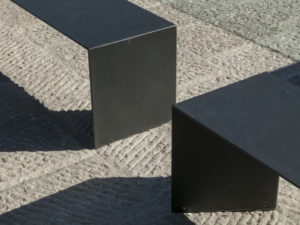Project Description
The striking tower on the new extension of the PHÄNOMENTA Science Centre in Lüdenscheid has the potential to be a famous landmark or even an icon of engineering and architecture. Interdisciplinary collaboration with KKW Architekten, WERNER Bauingenieure and formTL Ingenieure created an expressive trussed steel tower made from steel and timber, with a helical membrane stretched over its interior. Applying the tower-in-tower principle, this primary structure encloses a Foucault pendulum that is suspended separately from a secondary bearing structure. This logical separation enables the pendulum to move freely without effects of wind and vibrations of the primary structure, thus allowing visitors to the Science Centre to observe the Earth’s rotation.
Moreover, the tower is just one part of the expansion to PHÄNOMENTA: a two-storey extension offers an additional 1,400 m2 of exhibition space, with zones characterised by expressive shapes. On the one hand, this ensures the functionality of the exhibition space and, on the other hand, is a result of the requirements of the tower’s geometry. Since the concrete building with monolithic design also serves as a foundation for the distinctive steel structure, the frame is continued by diagonal supports in the concrete structure. The clear optics of the tower are based on a slim steel truss and timber structure made of triangular frames of rounded circular hollow pipe sections that, which are welded airtight. A demanding challanging 3D CAD analysis is required, especially for junctions nodes where up to six pipes come together at various angles. Membrane forces from pretensioning and wind are channelled directly into the junctions, which largely prevents bending stress on the frames. In order to hoist and assemble the tower in individual segments, screw connections beside the junctions that are verifiable somewhat outside of the complex junction geometry were arranged in the frames and covered with special semi-cylindrical metal sheets. This eliminated the need for welding work in high places, and concealed the segmentation necessary for assembly.
The membrane helix inside the steel bearing structure has a light and delicate appearance – „a structure that is almost nothing at all,“ as described by formTL CEO Gerd Schmid – and yet it is still quite impressive visually. The helix consists of just three structural components: 990 m² of membranes, three structural cables and nine anchoring rods with clamps. These few elements are sufficient to enable the membrane to adhere to the rotating and vertically tapered tower structure. While the calculated maximum form guarantees collision clearance from the outer tower pipes, the calculated minimum form prevents disturbances with the inner pendulum structure. The helical curve has a particularly striking effect at night, when the seams of the back-lit covering and the shadows of the ropes converge upwards in a cone shape, lending the tower an even taller appearance. KKW Architekten developed the light planning for this impressive illumination in partnership with Winkels Behrens Pospich Ingenieure für Haustechnik GmbH (wbp). Light management of the LEDs is part of the technical building fittings by wbp.
The Foucault pendulum suspended from the secondary bearing structure not only shows visitors the rotation of the Earth, it also offers them an enjoyable experience. This is because in the space below, the exhibition designer from beier+wellach projekte created the Phänorama: a 360º-projection of Lüdenscheid and the surrounding area, which is controlled by the oscillation period of the 30m-long pendulum like an oversized kaleidoscope.
























